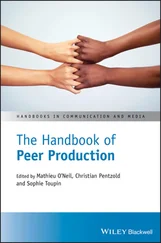14 Index
15 End User License Agreement
1 Chapter 3 Table 3.1 Semantic‐field encodings for four words. Table 3.2 Context‐word encodings of four words. Table 3.3 Cosine similarities between four words.
2 Chapter 6 Table 6.1 Percentage of correct identification by support vector machine mode...
3 Chapter 8Table 8.1 Summary of empirical questions discussed in this chapter
4 Chapter 12Table 12.1 Acoustic measures for American English idiomatic and literal utter...Table 12.2 Acoustic measures for sarcastic and literal utterances produced by...
5 Chapter 13Table 13.1 Overall accuracy in a free classification task with 20 male talker...Table 13.2 Observed speech‐processing benefits for multidialectal listeners.Table 13.3 Observed speech‐processing costs for multidialectal listeners.
6 Chapter 19Table 19.1 Demographic and audiological characteristics of participants in Ty...Table 19.2 Factor loadings from the principal components analysis of A‐only, ...
7 Chapter 25Table 25.1 Classification of degrees of hearing loss (HL), based on three‐fre...Table 25.2 Purposes of speech‐perception tests (Source: Adapted from Mendel &...Table 25.3 Domains of executive function and cognitive control.Table 25.4 Major domains of neuropsychological functioning.
1 Chapter 1 Figure 1.1 This sequence of tones presented to listeners by Bregman and Camp... Figure 1.2 A comparison of natural and sinewave versions of the sentence “Th... Figure 1.3 A comparison of the short‐term spectrum of natural speech (top); ...
2 Chapter 3 Figure 3.1 Illustration of the ear showing the early stages of the ascending... Figure 3.2 A power spectrum representing an instantaneous spectrogram (left)... Figure 3.3 Firing‐rate distributions in response to the vowel [ɛ] in head [h... Figure 3.4 Waveform (top), spectrogram (middle), and simulated LSR auditory ... Figure 3.5 Tonotopic map. HG = Heschl’s gyrus; STG = superior temporal gyrus... Figure 3.6 A map of cortical areas involved in the auditory representation o... Figure 3.7 Feature‐based representations in the human STG. (a) shows left‐he... Figure 3.8 Feature‐based representations in the human sensorimotor cortex. (... Figure 3.9 The human brain reinstates missing auditory representations. (a) ...
3 Chapter 4 Figure 4.1 Perturbation (solid line) and average compensation (dots) of firs... Figure 4.2 Average F1 (circles) and F2 (triangles) frequencies estimates acr...
4 Chapter 5 Figure 5.1 Several properties of the functional architecture of auditory wor...
5 Chapter 6 Figure 6.1 Vowel formant measurements from Peterson and Barney’s classic stu...Figure 6.2 Anatomical landmarks of the temporal lobe on and around the regio...
6 Chapter 7Figure 7.1 A schematic illustration of cognitive and linguistic resource all...
7 Chapter 8Figure 8.1 The spoken‐word recognition environment consists of the talker, t...Figure 8.2 The large oval represents general memory, the smaller oval (in op...
8 Chapter 9Figure 9.1 Sound spectrograms of the words perVERT (a) and PERvert (b) in th...
9 Chapter 12Figure 12.1 Means and standard errors for variability of syllable duration f...Figure 12.2 Means and standard errors for F0 variation for utterances produc...Figure 12.3 Means and standard errors for variability of syllable duration f...Figure 12.4 Means and standard errors for F0 variation for utterances produc...
10 Chapter 13Figure 13.1 Scatterplot showing mean accuracy by participant in a phrase int...Figure 13.2 Schematic of the proposed cognitive architecture connecting exem...
11 Chapter 14Figure 14.1 Voice learning study by Zäske et al. (2014). (a) Trial procedure...Figure 14.2 This figure graphically summarizes themes drawn from the researc...
12 Chapter 15Figure 15.1 The acoustic speech signal and its formant structure provide inf...Figure 15.2 The speech perceptual process includes sensitivity to multiple s...
13 Chapter 16Figure 16.1 When listeners adapt to nonnative‐accented speech, they are like...Figure 16.2 The images are schematized acoustic‐phonetic spaces, with five h...
14 Chapter 18Figure 18.1 Spectrogram of the sentence Everybody knows the story of Winnie‐ ...Figure 18.2 Ideal labeling and discrimination functions representing categor...Figure 18.3 Mean number of errors until a child reached the criterion for ma...Figure 18.4 Spectrograms of the sentence He climbed up the ladder in natural...Figure 18.5 Percentage of correct words recognized in each of the noise‐voco...Figure 18.6 Percentage of correct words recognized in each of the narrow‐ban...Figure 18.7 Labeling functions – the percentage of s responses across the co...Figure 18.8 Ambiguous image of two women.
15 Chapter 19Figure 19.1 Schematic of auditory‐visual integration. The circled stage indi...Figure 19.2 (Left) Scatterplot of relationship between VE for syllables and ...Figure 19.3 (Left) Scatterplot of the relationship between measures of audit...Figure 19.4 Illustration of the levels of visual blur that were used in the ...Figure 19.5 (Left) Percentage of correct responses in the V‐only condition f...Figure 19.6 Scatterplot of the relationship between AV and V‐only. The data ...Figure 19.7 Percent correct in the A‐only, V‐only, and AV conditions as a fu...
16 Chapter 20Figure 20.1 Simplified diagram of the internal and external components of a ...Figure 20.2 A spectrogram of the word “scale” (top) and a spectrogram of the...
17 Chapter 21Figure 21.1 Brain regions for spoken‐language processing, with speech‐relate...Figure 21.2 Neural systems for the perception and learning of speech‐sound c...
18 Chapter 22Figure 22.1 Synthetic stimuli used by Liberman, Delattre, and Cooper (1952) ...Figure 22.2 Two‐formant synthetic patterns used by Liberman et al. (1954) to...Figure 22.3 Synthetic stimuli used by Delattre, Liberman, and Cooper (1955) ...Figure 22.4 Steven and Blumstein’s (1978) averaged short‐term spectra, displ...Figure 22.5 Three schematic stimuli from an 11‐step synthetic VOT continuum ...
19 Chapter 25Figure 25.1 Illustration of the relations between auditory psychophysics (he...Figure 25.2 Seminal findings originally reported by Miller et al., (1946) sh...Figure 25.3 The rope analogy of speech, first proposed by Abercrombie (1967)...Figure 25.4 Results of a computational analysis of the recognition scores fo...Figure 25.5 Illustration of lexically easy and lexically hard words, showing...
1 Cover Page
2 Series Page
3 Title Page
4 Copyright Page
5 List of Contributors
6 Foreword to the Second Edition
7 Foreword to the First Edition
8 Preface
9 Table of Contents
10 Begin Reading
11 Index
12 Wiley End User License Agreement
1 ii
2 iv
3 iii
4 iv
5 vii
6 viii
7 ix
8 x
9 xi
10 xii
11 xiii
12 xiv
13 xv
14 xvi
15 xvii
16 xviii
17 xix
18 xx
19 xxi
20 xxii
21 xxiii
22 1
23 3
24 4
25 5
26 6
27 7
28 8
29 9
30 10
31 11
32 12
33 13
34 14
35 15
36 16
37 17
38 18
39 19
40 20
41 21
42 22
43 23
44 24
45 25
46 26
47 27
48 28
49 29
50 30
51 31
52 32
53 33
54 34
55 35
56 36
57 37
58 38
59 39
60 40
61 41
62 42
63 43
64 44
65 45
66 46
67 47
68 48
69 49
70 50
71 51
Читать дальше
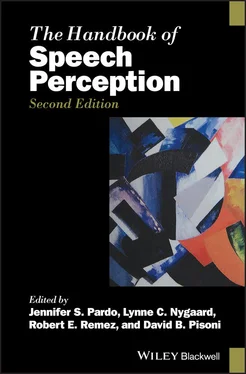
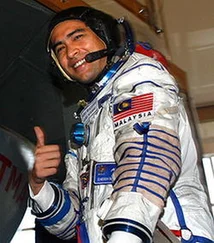
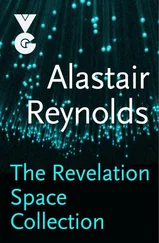
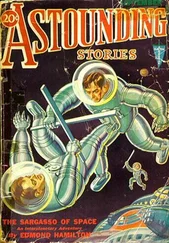


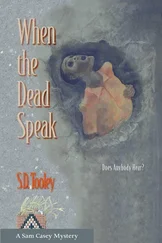
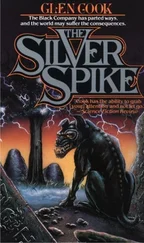
![О Генри - Справочник Гименея [The Handbook of Hymen]](/books/407356/o-genri-spravochnik-gimeneya-the-handbook-of-hymen-thumb.webp)



